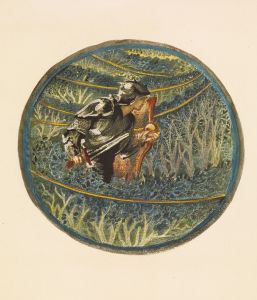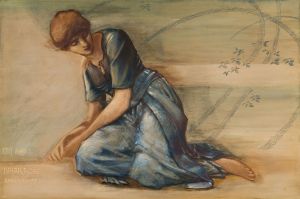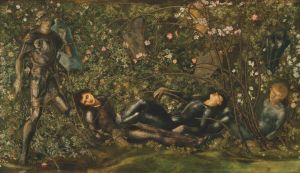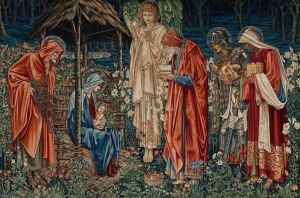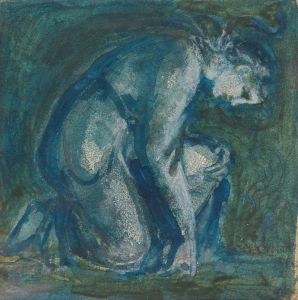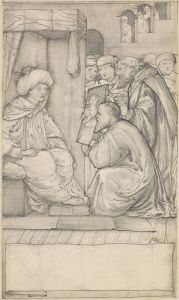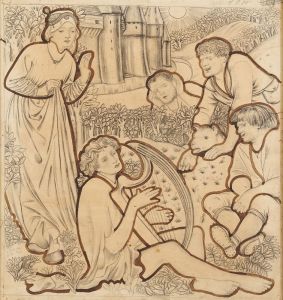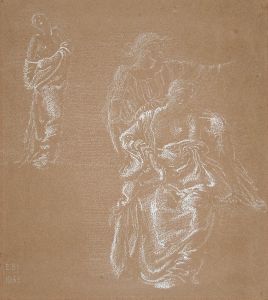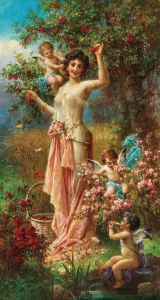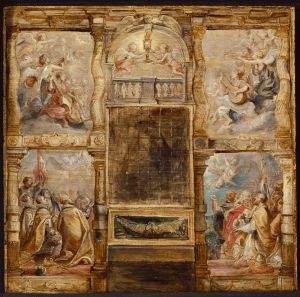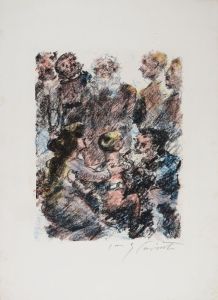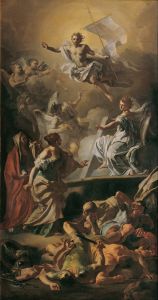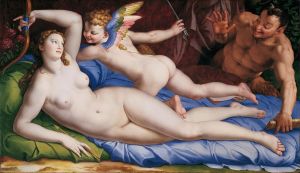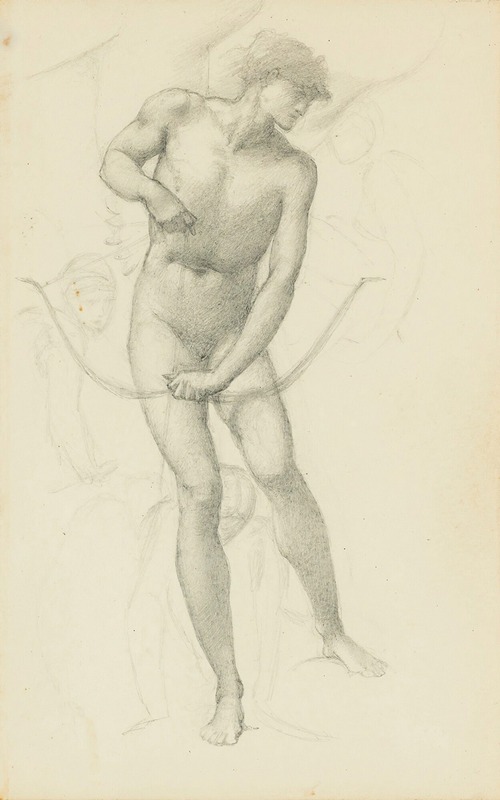
Cupid’s Hunting Fields
A hand-painted replica of Sir Edward Coley Burne-Jones’s masterpiece Cupid’s Hunting Fields, meticulously crafted by professional artists to capture the true essence of the original. Each piece is created with museum-quality canvas and rare mineral pigments, carefully painted by experienced artists with delicate brushstrokes and rich, layered colors to perfectly recreate the texture of the original artwork. Unlike machine-printed reproductions, this hand-painted version brings the painting to life, infused with the artist’s emotions and skill in every stroke. Whether for personal collection or home decoration, it instantly elevates the artistic atmosphere of any space.
Sir Edward Coley Burne-Jones was a prominent British artist and designer associated with the later phase of the Pre-Raphaelite movement and the Arts and Crafts Movement. His work is characterized by its romanticism, medievalism, and a distinctive use of color and form. One of his notable works is "Cupid’s Hunting Fields," which exemplifies his artistic style and thematic interests.
"Cupid’s Hunting Fields" is a painting that reflects Burne-Jones's fascination with classical mythology and allegory. The artwork depicts the Roman god Cupid, known for his role in love and desire, in a setting that suggests a narrative of pursuit and enchantment. Burne-Jones often drew upon mythological and literary sources for inspiration, and this painting is no exception, as it captures the ethereal and timeless quality typical of his oeuvre.
The painting is executed with Burne-Jones's characteristic attention to detail and use of a muted yet rich color palette. His technique often involved creating a dreamlike atmosphere, which is evident in "Cupid’s Hunting Fields." The figures in the painting are rendered with a delicate grace, and the composition is carefully balanced to draw the viewer into the mythical world that Burne-Jones sought to evoke.
Burne-Jones's work, including "Cupid’s Hunting Fields," was heavily influenced by his collaboration with other artists and designers of the time, such as William Morris. Together, they sought to revive the craftsmanship and aesthetic values of the medieval period, which they felt were being lost in the industrial age. This influence is apparent in the intricate details and the harmonious composition of the painting.
The painting also reflects Burne-Jones's interest in the themes of love and beauty, which were central to much of his work. Cupid, as a symbol of love, is a recurring figure in art and literature, and Burne-Jones's interpretation adds a layer of romanticism and introspection. The setting of the "hunting fields" suggests a metaphorical journey or quest, a common motif in Burne-Jones's art, where the pursuit of love and beauty is depicted as an adventure filled with challenges and discoveries.
Burne-Jones's contribution to the art world extends beyond his paintings. He was a key figure in the Arts and Crafts Movement, which emphasized the importance of craftsmanship and the integration of art into everyday life. His work, including "Cupid’s Hunting Fields," reflects these ideals, showcasing a blend of artistic skill and thematic depth that continues to resonate with audiences today.
While specific details about the provenance or exhibition history of "Cupid’s Hunting Fields" may not be extensively documented, the painting remains an important part of Burne-Jones's body of work. It exemplifies his ability to weave together mythological themes with a unique artistic vision, creating works that are both visually captivating and intellectually engaging.
In summary, "Cupid’s Hunting Fields" by Sir Edward Coley Burne-Jones is a testament to the artist's mastery of mythological subject matter and his commitment to the ideals of beauty and craftsmanship. Through his use of color, form, and narrative, Burne-Jones invites viewers into a world where love and art intertwine, reflecting the enduring appeal of his artistic legacy.





